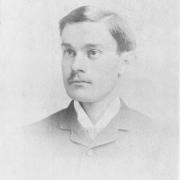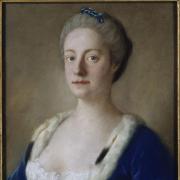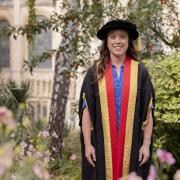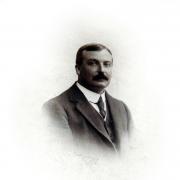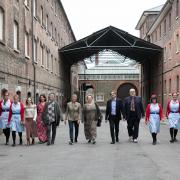A physician and anatomist named Jenner (but not to be confused with the famed Edward Jenner - 1749-1823 - the one who discovered vaccination), our Jenner was Sir William Jenner (1815-98), someone who merits our remembrance for his selfless achievements.
Born in Chatham, on January 30 1815, just a few months before Waterloo, a fourth son to parents John Jenner, an innkeeper, and Elizabeth née Terry, it was hardly the most salubrious beginning for someone who would become a leading light in medicine. The always hard-working Jenner was educated at University College, London and apprenticed to a surgeon in Marylebone for a while (‘Here laddie, could you just assist me in sawing this bloke’s leg off?’). It must have gone well, as he became a member of the Royal College of Surgeons in 1837 and took the London Doctorate of Medicine in 1844. It was after this he gave up any notions of general practice, embarking on a career as a consultant. He already had a glowing reputation for both his medical knowledge and bedside manner. It’s comforting to think Jenner had both of these covered in his early career at least, as that’s not always the case. As William achieved greater eminence and succumbed to the ageing process, the bedside manner became less comforting and more curmudgeonly.

Jenner returned to the scene of his schoolboy achievements, becoming a Professor at UCL between 1848-79. In the meantime (1847) he’d begun investigating cases at the London Fever Hospital, which eventually - after two years of study and scrutinising over 1,000 patient records - led to him publishing ‘On the Identity or Non-Identity of Typhoid and Typhus Fever’, in 1850, and establishing the difference between them in 1851, the latter insect-spread, the former, a scourge in Victorian times, spread via infected drinking water. The importance of this work for public health can’t be over emphasised. Before Jenner’s breakthrough it was believed they were the same disease. Now, it was understood fleas needed eliminating to combat typhus, whilst purifying the water supply was imperative if typhoid were to be eradicated. The following year (1852) Jenner became a Fellow of the Royal College of Physicians, the same year Great Ormond Street Children’s Hospital was founded. Jenner was crucial to the development of this revered institution, becoming a resident doctor, one of only three permanent staff during the hospital’s first decade. Jenner married Adela Adey in 1858, a bounteous coupling that saw five sons and a daughter bestowed upon them.

A further acknowledgement of his reputation came Jenner’s way in 1861 when he first began an association with the royal family, attending Prince Albert during his losing battle with typhoid (although there’s still debate as to whether it was this that actually killed him). In the following year, Jenner became Physician in Ordinary to Queen Victoria. He doubled up in 1863, providing the same service to ‘Bertie’, the Prince of Wales and future Edward VII, and would also end up treating Bertie when he was afflicted with typhoid a decade after his father. In recognition of all this royal service Jenner was made 1st Baronet on February 25 1868, the Jenner baronetcy being of Harley Street, Cavendish Square. He was also a Knight Grand Cross of the Order of the Bath and a Fellow of the Royal Society. He was sufficiently well known in 1873 to be featured in Vanity Fair magazine as one of its ‘Men of the Day’, being described as a ‘Physic’. ‘Men of the Day’ sounds sexist but was reflective of the era when women struggled to be admitted to professions such as medicine. No such issues faced Jenner, who became not only a Professor at UCL but also a physician at University College Hospital, physician/consultant at several other hospitals, a lecturer, and President of various august bodies, including the Royal College of Physicians between 1881-88. He was an undisputed leader within his profession; not bad going for a humble innkeeper’s son. His reputation as a consultant preceded him until his retirement in 1890, aged 75, due to failing health, when he also finally relinquished his royal duties. This must have been a wrench: although Victoria and Jenner came from polar opposites as far their backgrounds were concerned, they became lifelong friends.

Not everyone in the Jenner family pursued a career in medicine. His elder brother, Charles (1810-93) made a mint from an Edinburgh linen drapery. His son, Sir Walter Jenner (1860-1948), was the succeeding 2nd Baronet, a title that expired on the death of the 3rd Baronet (1954) while another son, Leopold (1869-1953), an Army officer, was decorated during WW1. The latter name tells us Jenner indulged in a novel form of ‘name dropping’ as he adopted royal names for his children; the cheek of it! The 3rd Baronet was Albert Victor Jenner, another example of William’s apparent desire to publicise his friends in lofty places. His only daughter, Lucy Adela Jenner (1859-1909), was a participant in the women’s suffrage movement, while another of the sons, Arthur Charles William Jenner (1864-1900) became a barrister. It was a family that had certainly gone up in the world from its Medway origins.
Sir William Jenner died at Bishop’s Waltham, Hertfordshire, on December 11, 1898, aged 83. He left a considerable fortune for the time (£375,000 or 40 million quid in today’s dosh) but also a legacy that all medical professionals should still heed: ‘The great aim of the physician is to prevent disease; failing that, to cure; failing that, to alleviate suffering and prolong life’. That legacy was published in two volumes, ‘Lectures and Essays’ (1893) and ‘Clinical Lectures’ (1895). He was said to have been forthright, direct, sometimes curt and autocratic, could be intolerant and easily annoyed, but he was brilliant and hard-working, imbued with common sense, and you knew where you stood with him. When he wasn’t trying to save lives he read pulp fiction to relax and lived the medical professional’s exemplary life; he didn’t smoke and was almost teetotal. In fact, he drank bucketloads of tea.






